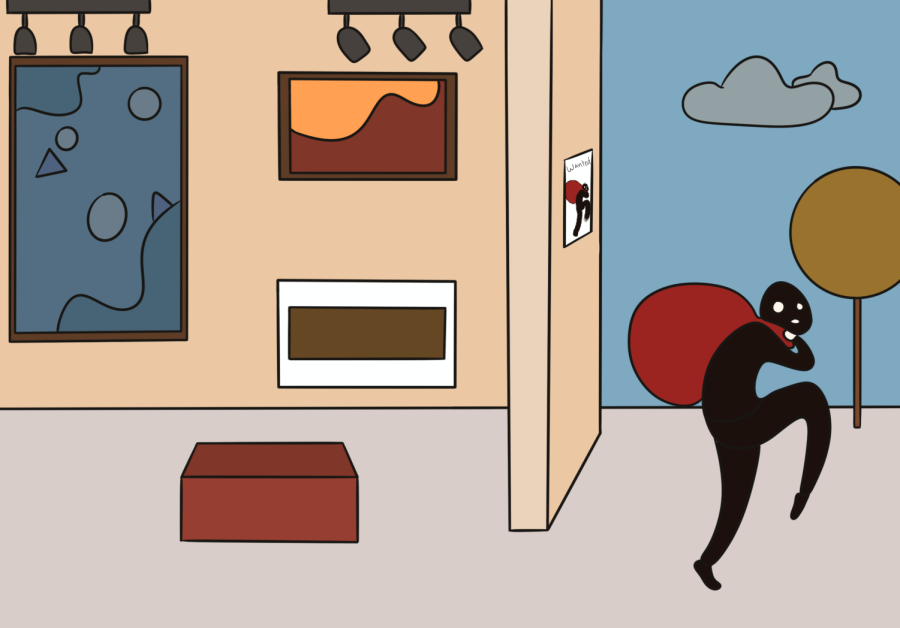Repatriation and reparations: two pills the Western world refuses to swallow. By refusing to return artifacts that don’t belong to them, western institutions continue to perpetrate the sins of their ancestors.
Stolen artifacts are spoils of war, taken to enforce submission and paraded to prove dominance. Museums present the past to the public, but whose version of the past is being presented?
Repatriation of artifacts involves the act of returning cultural, historical and archaeological objects to their country of origin or the communities they rightfully belong to.
However, recent indigenous scholars have noted the term rematriation is a better label to use since it means returning to a way of life. It makes the process less procedural and more culturally sensitive.
There is little to no enforcement of this process on the international scale, but within the U.S. there is the Native American Graves Protection and Repatriation Act (NAGPRA).
Passed in 1990, NAGPRA provides for the repatriation of Native American human remains, funerary objects, sacred objects and objects of cultural patrimony. This law holds museums and federally funded institutions accountable but has no regulation for private landowners or privately funded institutions.
It is also worth noting the U.S. only has repatriation legislation for Native Americans and not for any other racial or ethnic group.
Reparations involve taking action to compensate for previous harm or injustice. There is currently no federal legislation that provides reparations for any group, but the progress being made in the name of repatriation should ideally lead to some change.
The British Museum and the Metropolitan Museum of Art –– two world-renowned museums –– are among those who have come under fire in recent news for their dubious dealings.
A report conducted by the International Consortium of Investigative Journalists (ICIJ) found the Met Museum has more than 1,000 objects in its collection tied to people with alleged crimes related to the antiquities trade. Authorities seized 29 items from the Met in 2022, citing looting. They found plates, helmets, and statues from all over the world as well as Greek busts and Egyptian bronzes in their acquisition from the museum.
The British Museum, however, has no qualms about their stance on not returning objects. Protected by the British Museum Act of 1963 and the National Heritage Act of 1983, the museum can retain their stolen items and instead loan them to the countries they are originally from. The U.K. government itself has no plans to amend these laws, showing their firm belief in the philosophy of finders-keepers.
Old habits die hard.
The British Museum capitalizes on their war spoils, providing the public with their interpretation of history rather than detailing the dark histories of the items’ acquisition. The most notable artifacts on their display would be the Benin Bronzes.
Britain launched an expedition with 5,000 troops and 1,200 naval soldiers in 1897 and completely ravaged the country of Benin, in Africa, ultimately burning it to the ground. They stole around 3,000 artifacts from the country and were then celebrated for their feat in the papers.
Repatriation is a necessary step to heal from the traumas induced by colonial entities, but the precedent being set by the U.K. and its institutions goes to show that this fight is far from over. Continuing to hold hostage stolen artifacts of great cultural significance is just another form of colonialism.
“The way we think about human evolution as being a kind of global history that justified the collection of human remains and research on them in ways that not everyone is on board with, get masked and labeled in that museum context which is meant to engender this sense of ‘Well, this belongs to all of us,’” said Katherine Hayes, Associate Professor of Archaeology at the University of Minnesota. “At least for a largely white, Western European or American audience.”
However, there is hope on the horizon.
The Weisman Art Museum is a local example of a museum putting their money where their mouth is.
“We are giving it all back,” said Alejandra Peña-Gutiérrez, director of the Weisman art museum, speaking about her and her team’s efforts to right the wrongs of the past.
But this process takes time. Many tribes have a claim to the items that were found in the New Mexico dig and there are complex processes the tribes must follow before the artifacts can be returned. For Peña-Gutiérrez, witnessing the emotional side of the repatriation process has been incredibly moving.
“I just feel so bad about how we’ve treated the tribes and how this didn’t happen before,” Peña-Gutiérrez said. “I feel that we, as a system, have never seen them as people with feelings and emotions.”
Peña-Gutiérrez plans to continue to rebuild the relationships with the Native American tribes and ensure that the voices being amplified are from the right perspective.
While the University has begun the process of building relationships with Native communities, Hayes says there is still much more to be done.
“President [Joan] Gabel was the first president to really come in and start to try to build a relationship with the tribal nations in the state,” Hayes said. “It remains to be seen if subsequent leadership actually continues that effort.”
With a firm step in the right direction, the University must ensure that whoever takes over after Gabel will continue to strengthen these ties and work to repair what has been broken by previous leadership.
Large institutions need to rise to the occasion and set a new standard rather than defaulting to those set by their predecessors.

















